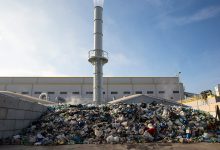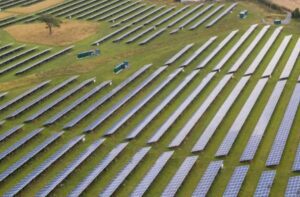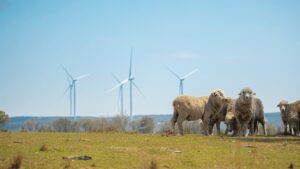In a bid to foster new ways of managing the state’s growing waste problem, the NSW government will effectively push controversial waste-to-energy incineration projects out of Sydney and into regional areas – but could still face community opposition.
The Berejiklian government published a new Energy From Waste Infrastructure Plan on Friday that it says should provide a level of certainty around the future development of waste-to-energy projects in New South Wales.
New South Wales, and particularly parts of Sydney, have struggled to find long-term solutions to a growing issue of waste, with landfills at risk of reaching capacity, and local communities are generally opposed to any proposals to incinerate the growing mounds of waste.
NSW energy and environment minister Matt Kean said the new plan would balance the economic opportunities created by waste-to-energy projects and the concerns of local communities worried about environmental and air quality impacts.
“This is about getting the balance right between supporting investment in NSW, driving a circular economy and reducing carbon emissions while also respecting the concerns of local communities,” Kean said.
“The Plan ensures new thermal waste to energy projects are co-located with transport links and complementary industries and kept away from high-density residential areas. It also allows proposals which involve existing industrial facilities switching to more environmentally friendly waste-derived fuels.’
Four areas have been identified for potential waste-to-energy projects, including the West Lithgow Precinct, Parkes Special Activation Precinct, Richmond Valley Regional Jobs Precinct and Southern Goulburn-Mulwaree Precinct.
The NSW government says waste needs to be better managed, and burning waste for energy production would reduce the amount of inflows into the state’s landfills, while also providing a source of energy that can displace other polluting forms of energy.
“Analysis shows that a mix of potential infrastructure solutions are needed to meet the state’s residual waste needs. The Waste Strategy recommends a limited number of energy from waste facilities, as well as extra landfills and ‘dirty Material Recovery Facilities’ to manage residual waste in NSW,” the plan says.
Many waste-to-energy projects are already operating throughout New South Wales, including some that convert water or sewage waste into gas, and the extraction of methane gas from landfills, all of which can be burnt for power generation.
However, there are concerns about proposals to directly burn non-recyclable waste – often consisting of plastics – for energy production, with environmental and local community groups raising concerns about air pollution and the potential for hazardous by-products to be spread.
In 2019, waste management company Cleanaway revealed it was considering a $500 million project in Sydney’s west that would have the capacity to incinerate up to 500,000 tonnes of household and business waste that is unable to be recycled, and produce enough electricity to power around 65,000 homes.
Planning approvals for the Cleanaway project are still being considered by the NSW planning department, with the project having secured ‘state significant’ development status.
The Department of Planning has received more than 600 submissions from individuals in response to Cleanaway’s Western Sydney Energy & Resource Recovery Centre project. Just four of the submissions expressed support.
The new infrastructure plan has already received criticism from the NSW Greens, who said that while the plan would prevent the incineration of waste within Sydney, it would most likely just be relocated into regional communities.
“This will bring some relief to community groups in Sydney who have been campaigning against the construction of these toxic incinerators in their communities for years,” NSW Greens spokesperson for waste and pollution Cate Faehrmann said.
“Unfortunately though, the Government is now expecting a handful of regional communities to bear the brunt of the growing waste problem in NSW.”
“There is also no detail on what happens to the two Sydney incinerators that are currently in the planning system. I call on the Environment Minister Matt Kean to cancel these projects and commit that there won’t be other precincts added to the approved list at a later date,” Faehrmann added.








